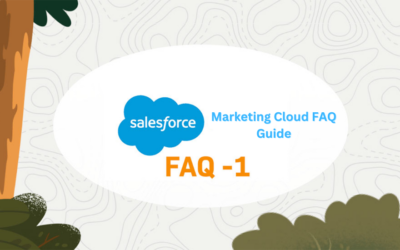In today’s rapidly evolving business landscape, achieving success goes beyond just financial performance. It involves creating a workplace environment where diversity and inclusion (D&I) in executive leadership play a pivotal role in driving innovation, fostering creativity, and ultimately, enhancing competitiveness. In this comprehensive blog article, we will explore how organizations that prioritize diversity and inclusion in their executive ranks gain a substantial competitive advantage in the global marketplace.
Furthermore, this article aims to unravel the intricate tapestry of D&I in executive leadership by delving into its profound implications on various aspects of modern businesses. We will navigate the intricate pathways of data-driven decision-making, talent acquisition strategies, technical innovation, cybersecurity resilience, and much more. By the time you reach the conclusion, you’ll have a nuanced understanding of how D&I isn’t just a moral compass guiding businesses but a tactical roadmap that charts a course toward innovation, adaptability, and sustained prosperity. As we journey through each section, you’ll gain invaluable insights into the technical intricacies and strategies that can propel organizations to the forefront of their industries, leveraging diversity and inclusion not just as ideals, but as essential components of their strategic DNA. If you need assistance with Salesforce CRM setup and optimization, companies like CRM Force can provide valuable expertise and support.
1- The Business Case for Diversity and Inclusion
1.1 Demographic Shift and Talent Pool
The demographic shift in the workforce is not just about numbers; it’s about a profound change in the talent pool. As the workforce becomes more diverse in terms of race, gender, ethnicity, age, and other factors, organizations that proactively embrace this diversity will have access to a wider range of skills, experiences, and perspectives. From a technical standpoint, this translates into a broader array of problem-solving approaches and a more adaptable workforce capable of addressing a variety of challenges.
1.2 Data-Driven Decision-Making
In a data-centric world, companies are increasingly relying on analytics and insights to make informed decisions. Diverse executive teams contribute to more well-rounded data interpretation, reducing the risk of data bias and providing a more holistic view of opportunities and threats. This technical advantage leads to better decision-making, as executives with diverse backgrounds can identify data patterns that may go unnoticed in more homogenous teams.
1.3 Talent Attraction and Retention Strategies
The competition for top-tier talent is fierce, and organizations that prioritize D&I in executive leadership have a technical advantage in attracting and retaining skilled professionals from all walks of life. By showcasing a commitment to diversity in leadership, companies create a more appealing employer brand, which is especially important in industries where talent is in high demand.
2- The Role of Inclusive Leadership
2.1 Fostering Inclusive Tech Cultures
Inclusive leadership isn’t just a feel-good concept; it has practical implications for tech-driven industries. Inclusive leaders create an environment where employees feel safe expressing their unique perspectives, ideas, and concerns. This inclusivity can lead to the identification of innovative solutions to complex technical challenges.
2.2 Technical Skill Enhancement
Inclusive leaders recognize that diversity extends beyond demographics. They leverage the diverse skills and technical expertise of their team members to enhance the overall capability of the organization. This might involve cross-functional training, peer mentoring, and collaborative problem-solving.
2.3 Minimizing Technical Debt
Technical debt, the cost of delaying necessary technical work, can accrue when teams lack diversity and inclusion. Inclusive leadership promotes transparency and accountability, ensuring that technical issues are addressed promptly rather than being swept under the rug, thus reducing the accumulation of technical debt over time.
3- The Competitive Advantage of Diverse Executive Leadership
3.1 Global Perspective and Market Adaptation
In industries with global reach, diverse executive leadership provides a significant technical advantage. Executives from diverse backgrounds often have a deeper understanding of international markets, cultural nuances, and regulatory landscapes. This insight enables companies to adapt their products, services, and technical strategies to meet the unique needs of diverse customer bases worldwide.
3.2 Technical Innovation and Creativity
Technical innovation is the lifeblood of many modern organizations. Diverse executive teams, with their broad range of perspectives and experiences, can foster an environment of continuous technical innovation. This diversity in thought and approach often results in the development of creative solutions to complex technical challenges.
3.3 Cybersecurity and Risk Mitigation
In an era of increasing cybersecurity threats, diverse executive leadership can bolster an organization’s defenses. Diverse teams are more likely to anticipate and address security vulnerabilities from different angles, enhancing an organization’s ability to mitigate risks and protect critical technical assets.
4- Overcoming Technical Challenges
4.1 Addressing Unconscious Bias in Tech
In the tech industry, addressing unconscious bias is paramount. Bias can seep into algorithms, software development, and product design, leading to unintentional discrimination and ethical issues. Organizations must invest in comprehensive training and awareness programs to help tech leaders and teams recognize and mitigate bias throughout the development process.
4.2 Building a Diverse Tech Talent Pipeline
Developing a diverse talent pipeline in technical roles requires more than just good intentions. Companies need to establish mentorship programs, leadership development initiatives, and succession plans that actively identify and groom individuals from underrepresented groups for leadership roles in technology-driven departments.
4.3 Measuring Technical Progress
To track the impact of D&I initiatives, organizations should establish key performance indicators (KPIs) with a technical focus. These might include metrics related to diversity in technical teams, the impact of inclusive leadership on technical project outcomes, and the reduction of technical debt over time. Regularly measuring and analyzing these technical KPIs ensures transparency and accountability in achieving diversity and inclusion goals.
Conclusion
In conclusion, the technical dimensions of diversity and inclusion in executive leadership are indispensable in today’s business landscape, particularly in technology-driven industries. Companies that embrace diversity and practice inclusive leadership are not only better equipped to navigate technical challenges but also poised to thrive in the global marketplace. From data-driven decision-making and innovative problem-solving to global market adaptation and cybersecurity resilience, the technical advantages of diverse executive leadership are both clear and compelling.
It is imperative for organizations to recognize that Diversity and Inclusion in Executive Leadership are not just theoretical ideals but practical necessities. By embracing diversity and inclusivity at a technical level, businesses can unlock their true potential for innovation, adaptability, and long-term success. To learn more about how CRM Force can assist you in recruiting top CRM talent and optimizing your CRM strategies for successful drip campaigns, contact us today. Together, let’s maximize your customer engagement Contact Us today.





